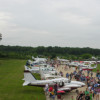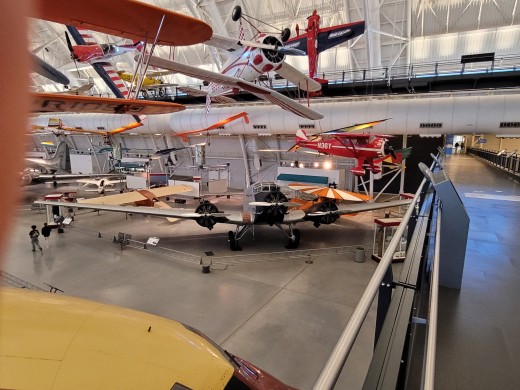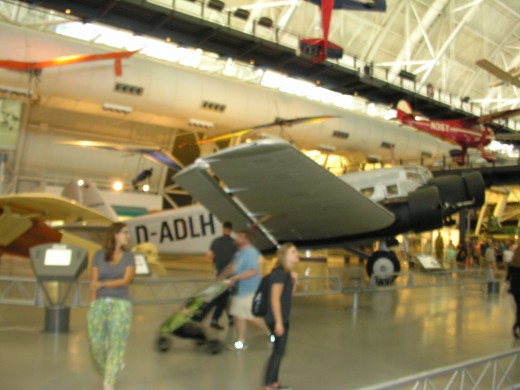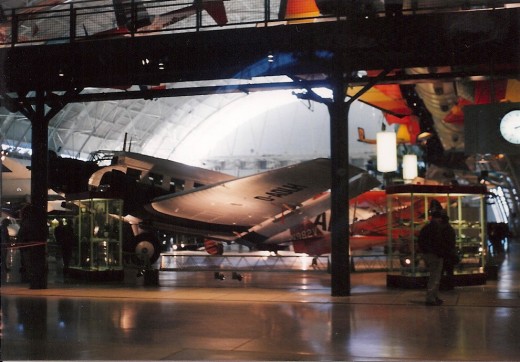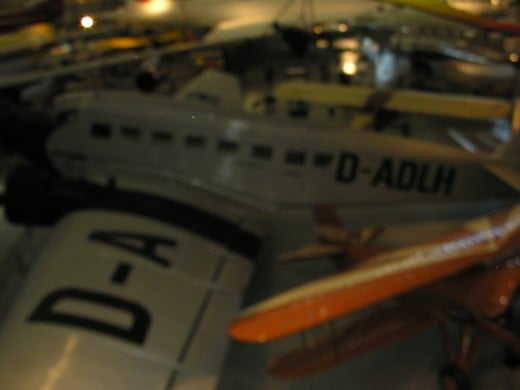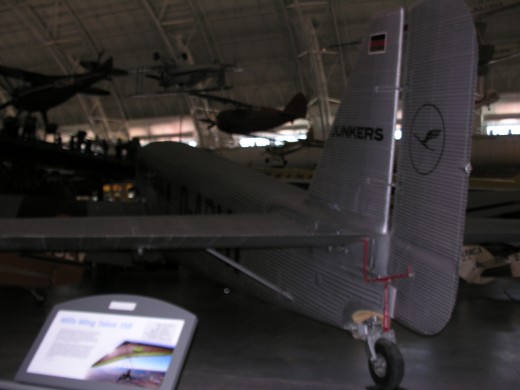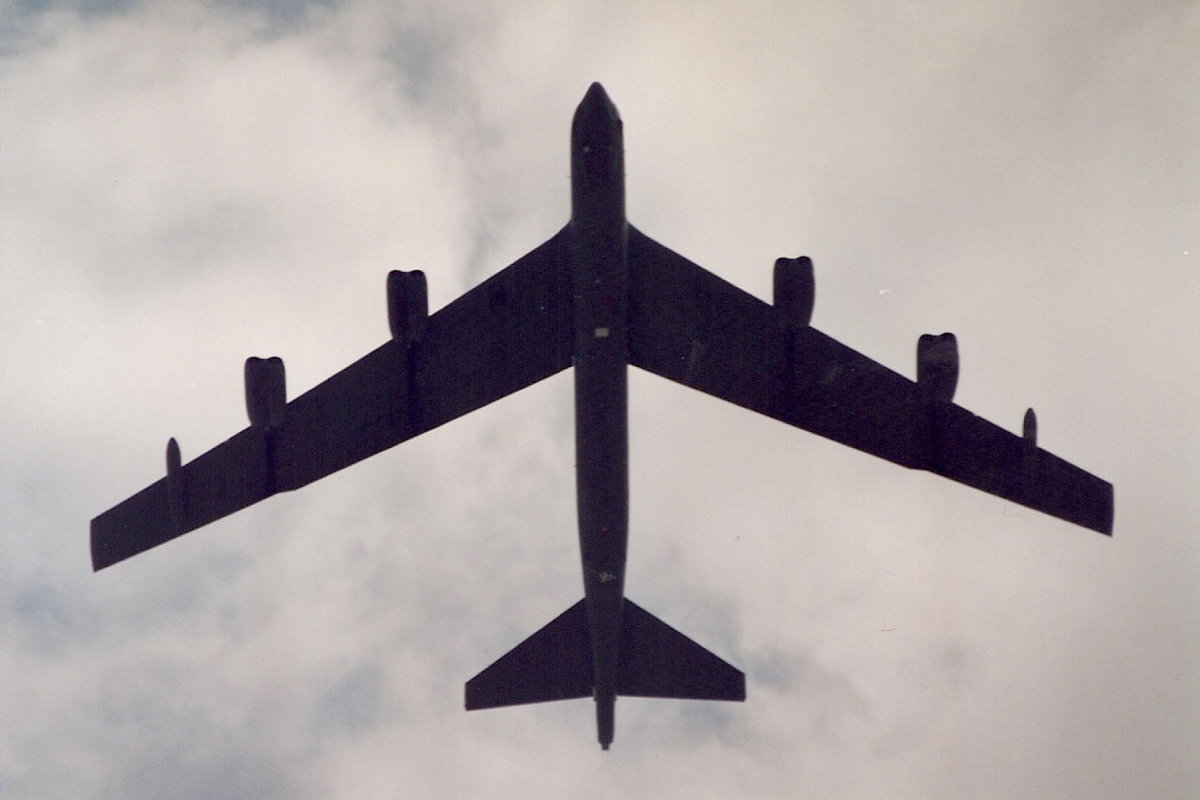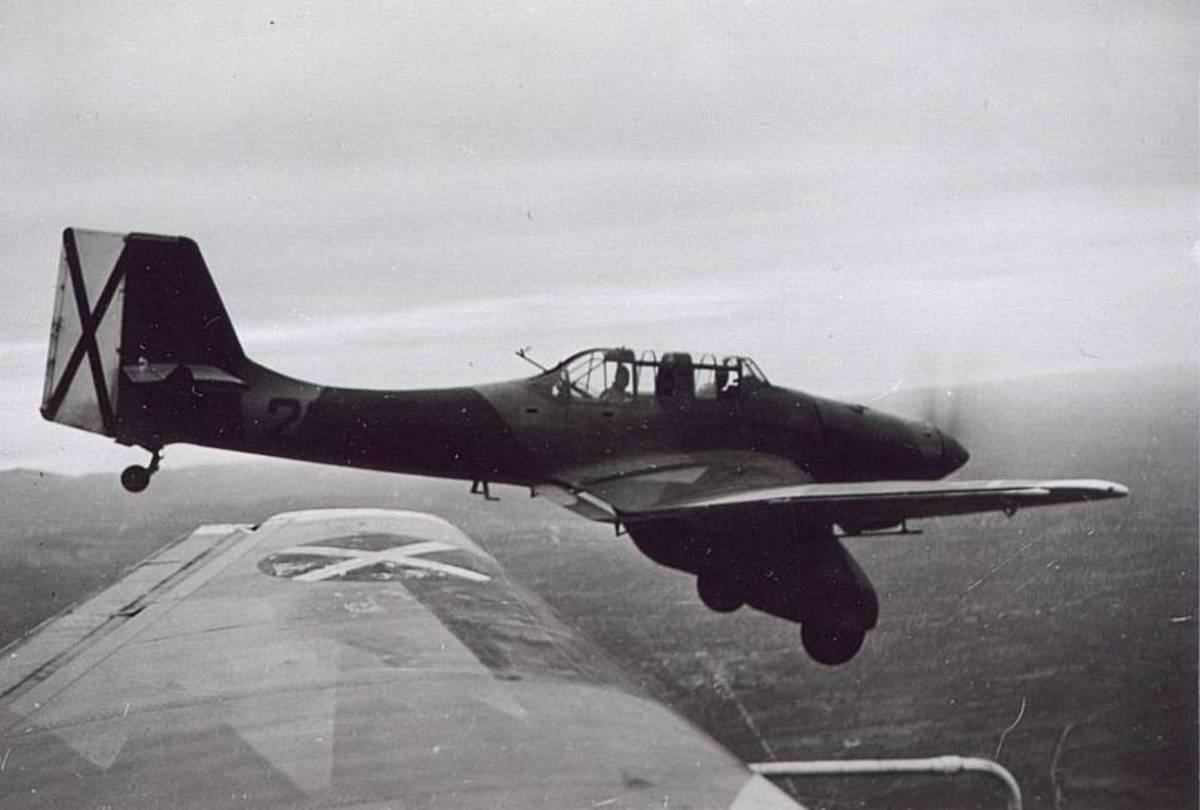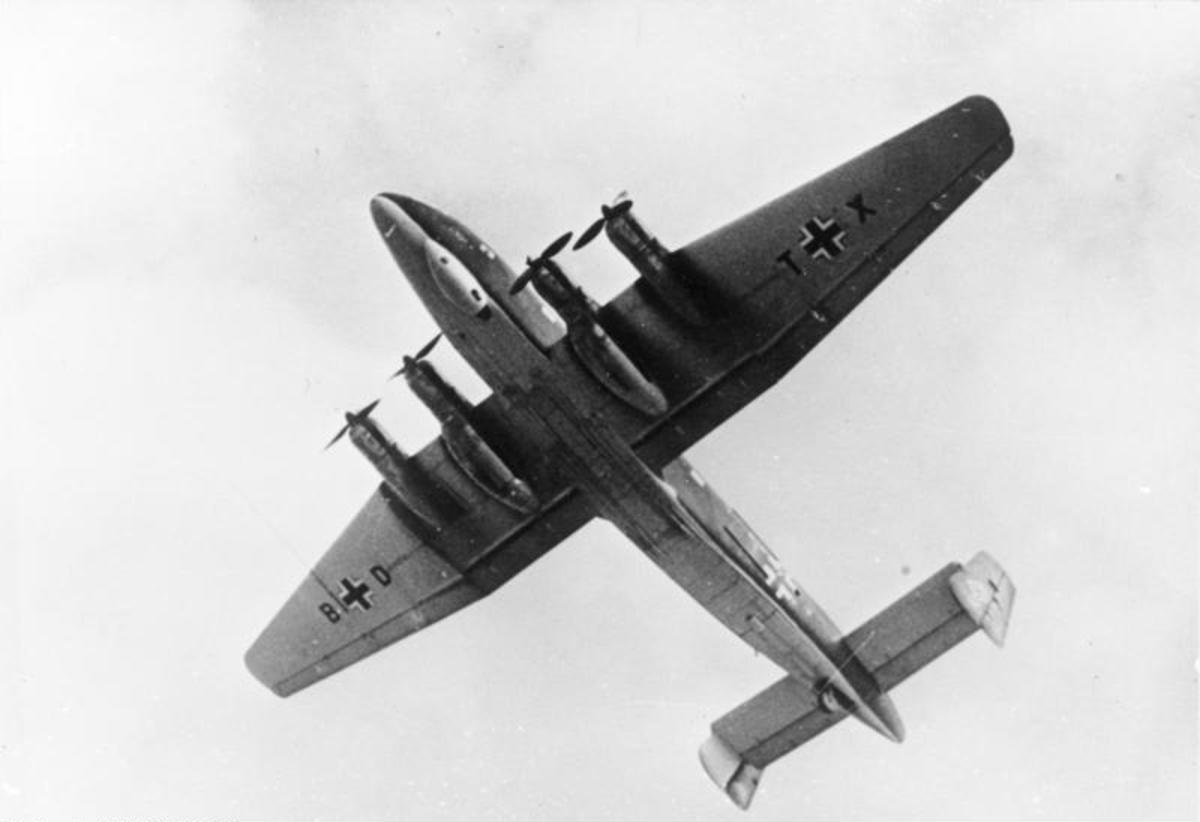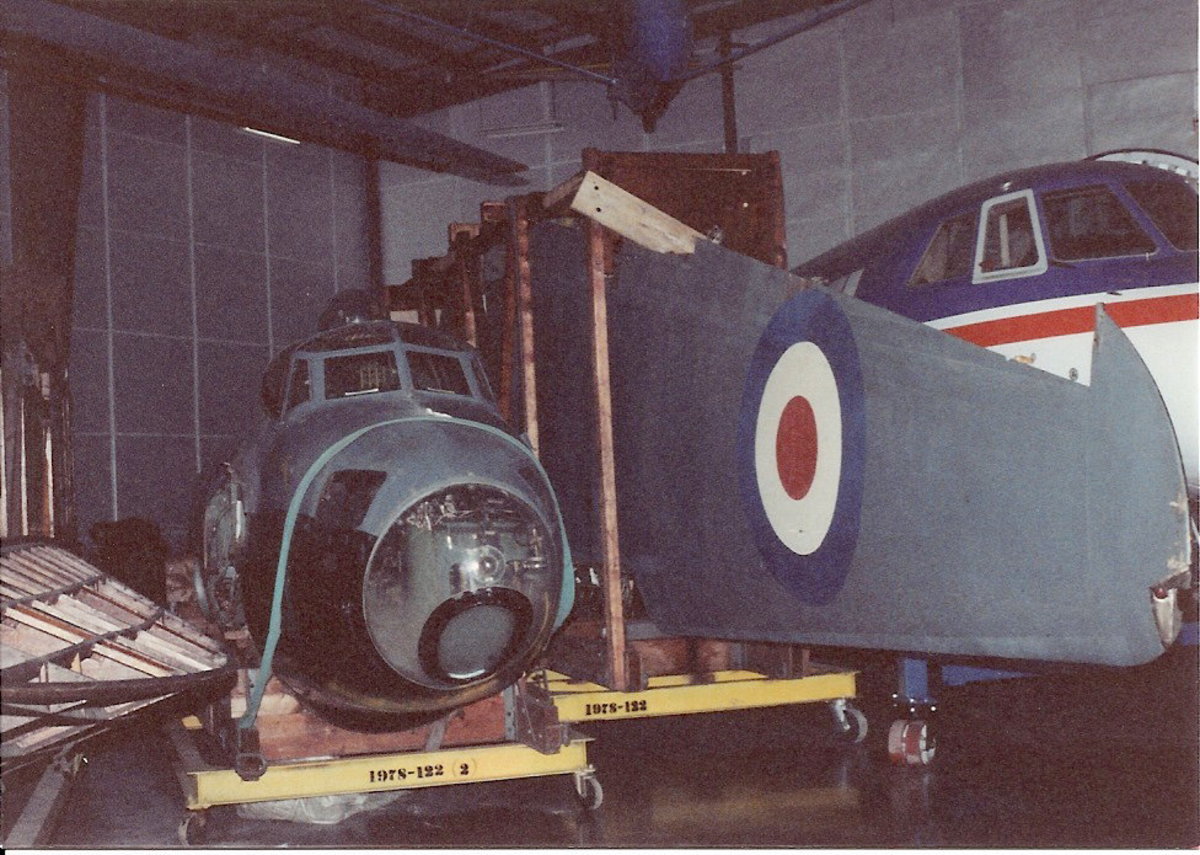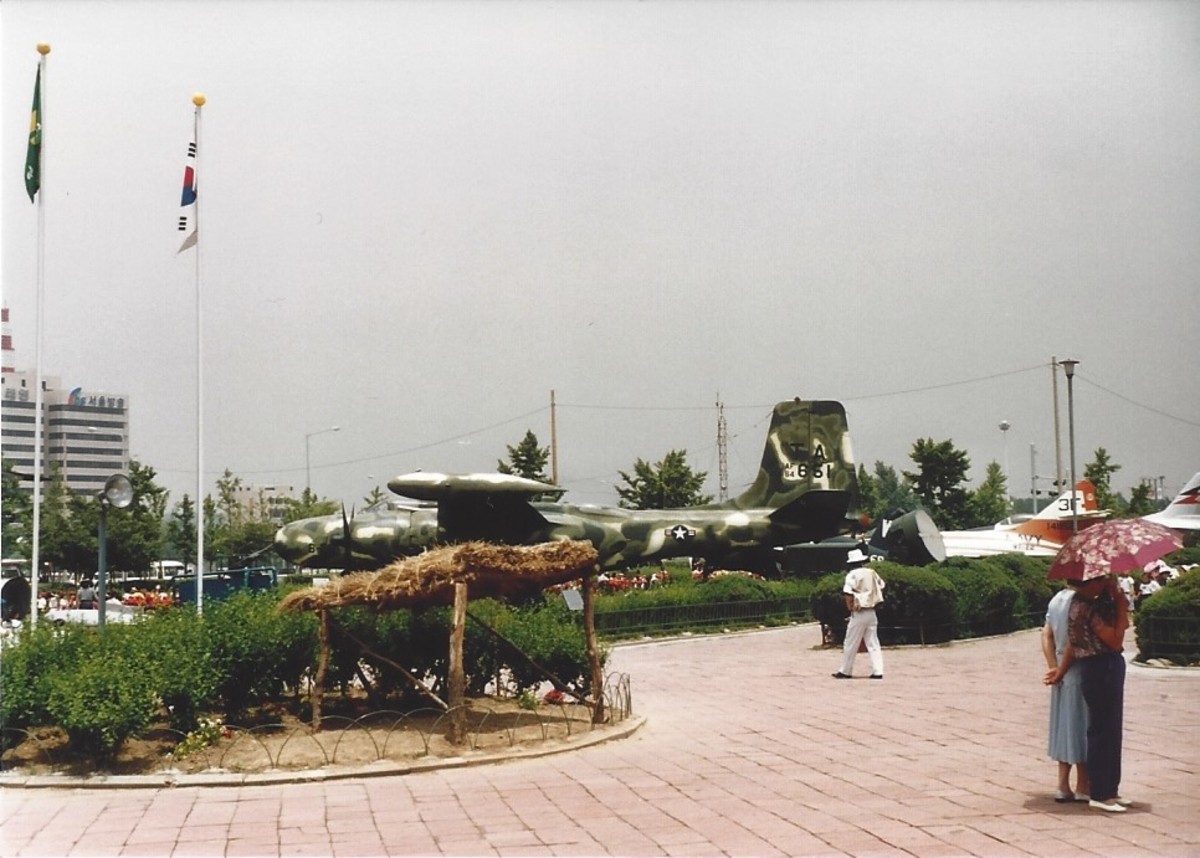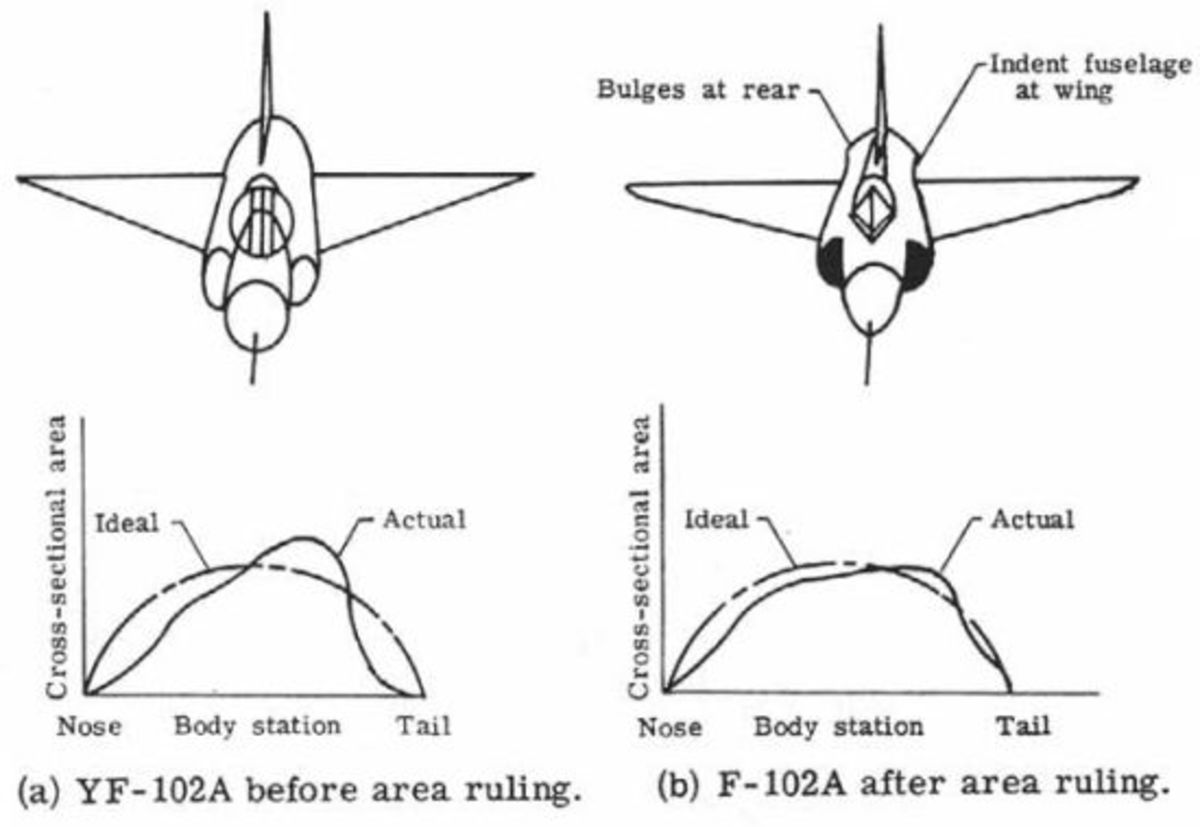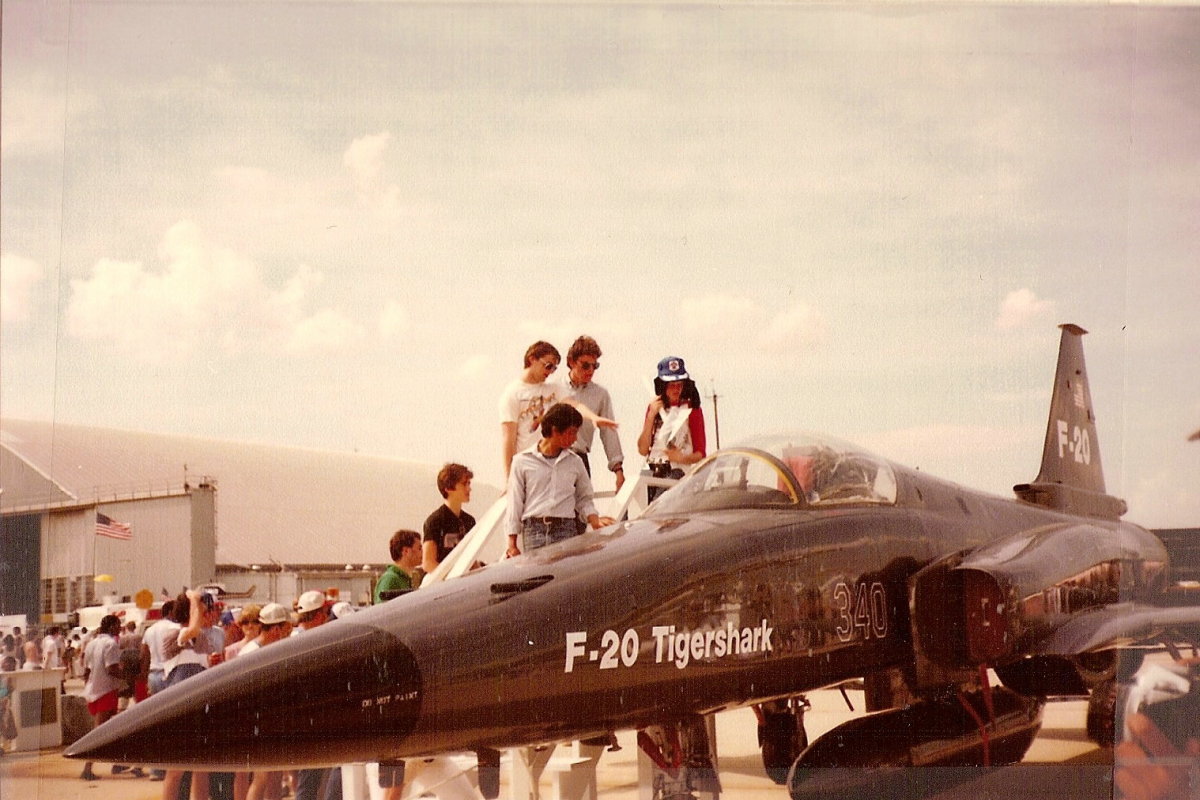- HubPages»
- Education and Science»
- History & Archaeology»
- Military History
The Smithsonian’s Ju 52s





The Smithsonian's Ju 52s
The Ju 52 at the National Air and Space Museum’s Udvar-Hazy Center is actually a Spanish built CASA 352. CASA built this aircraft in the early 1950s. Fairoaks Aviation in England purchased the aircraft in the mid-1970s. It appeared in a number of World War II movies. Lufthansa purchased the aircraft in 1987 and restored the aircraft in Hamburg. B.M.W. overhauled the engines in Munich. It was shipped to Washington Dulles International Airport where Page Aviation reassembled the aircraft.[i] This Ju 52 is in the air transport section where it is adjacent to the section where the Center displays World War II Luftwaffe aircraft.
The Smithsonian also has a Ju 52, Werke Nummer 560049, in its collection. Allied forces captured this aircraft at the Merseburg Werks. The HMS Reaper took this aircraft to the United States where the USAAF gave it the Foreign Evaluation number FE-4010, later T2-4010. This aircraft is in deep storage.[ii]
[i] National Air and Space Museum web site (https://airandspace.si.edu/collection-objects/junkers-ju52), last accessed 2/13/17.
[ii] Warbirds Directory, by John Chapman & Geoff Goodall, and edited by Paul Coggan, © December 1992.
Civilian Service
The prototype Ju 52 made its first flight on October 13, 1930.[i] It was a single engine transport. The 7th Ju 52 built, Werke Nummer 4007, was made with 3 engines.[ii] The 3 engine version of the Ju 52s was designated Ju 52/3m. It is the Ju 50/3m that made its mark in aviation history. The Ju 52’s engines were Pratt & Whitney Hornet radial engines. BMW built these engines under license. BMW improved on the Hornet in 1933 with the 132A-1 engine. This engine was rated at 600 horsepower. The Ju 52 /3m ge had a crew of 3 and could accommodate 17 passengers. It has a cruising speed o 155 mph.[iii] Ju 52s could take-off and land at airfields as small as football fields.[iv]
The German flag carrier airline Deutsche Luft Hansa[v] had over 200 Ju 52s in its fleet. Luft Hansa pilots nicknamed the aircraft “Tante Ju” (Auntie Ju). Other national flag carrier airlines also purchased the Ju 52. A Luft Hansa Ju 52 with technical crew consisting of Carl August Freiherr von Gablenz (pilot), Robert Untucht (flight captain), and Karl Kirchoff (flight engineer) became the first passenger aircraft to fly over the Pamir mountains when it flew from Kabul, Afghanistan to China on August 24, 1937.[vi] Luft Hansa continued to fly the Ju 52 until May 15, 1945. That flight was from Oslo, Norway to Aarhus, Denmark.[vii]
While Luft Hansa had to cease operations other airlines continued to fly them. While Luft Hansa stopped flying the Ju 52 British European Airways began flying Ju 52s. The Ju 52 continued flying with commercial airlines until the late 1960s when the last commercial Ju 52 that was flying in New Guinea was retired.[viii]
The end of commercial service didn’t end the Ju 52’s career in commerce. Ju 52s flew for movies, usually painted as a Luftwaffe aircraft. Three Ju 52s fly out of Dubendorf airfield outside Zurich, Switzerland where they are used for sight-seeing flights over the Swiss Alps. One of these JU-AIR Ju 52s crashed on August 4, 2018 killing all 20 people on board. Lufthansa also has a Ju 52 in service where it makes sight-seeing flights and flights at air shows.[ix]
[i] Warplanes of the Third Reich, by William Green, © 1970.
[ii] Warplanes of the Third Reich, by William Green, © 1970.
[iii] Warplanes of the Third Reich, by William Green, © 1970.
[iv] National Air and Space Museum web site (https://airandspace.si.edu/collection-objects/junkers-ju52), last accessed 2/13/17.
[v] Now named Lufthansa
[vi] World War II database, contributor C. Peter Chen, (http://ww2db.com/aircraft_spec.php?aircraft_model_id=201), last accessed 2/13/17.
[vii] National Air and Space Museum web site (https://airandspace.si.edu/collection-objects/junkers-ju52), last accessed 2/13/17.
[viii] National Air and Space Museum web site (https://airandspace.si.edu/collection-objects/junkers-ju52), last accessed 2/13/17.
[ix] National Air and Space Museum web site (https://airandspace.si.edu/collection-objects/junkers-ju52), last accessed 2/13/17.
Military Service
In October 1933 the Luftfahrtkomissariat put in an order for a bomber version of the Ju 52. Germany was still giving the illusion they didn’t have an air force. The Ju 52s were only to be a stop gap measure until more suitable bombers became available. In March 1, 1934 Germany had 24 of these Ju 52 bombers. Germany admitted the use of Ju 52s as bombers and the existence of the Luftwaffe in 1935.[i]
When the Spanish Civil War broke out Germany sent 20 Ju 52s to support The Nationalists. From July 20, 1936 until early October 1936 Ju 52s transported 13,962 troops, along with artillery pieces, other weapons and supplies from Morocco to Spain. The Ju 52s made 868 flights during this operation. This air bridge kept operating until the Nationalists neutralized the Republican navy. Adolf Hitler remarked “Franco ought to erect a monument to the glory of the Ju 52. It is this aircraft that the Spanish Revolution has to thank for its victory.”[ii]
Ju 52 bomber operations began on August 14, 1936 when Commandante Francisco Díaz Trechuelo bombed Republican troops. Ju 52s continued bombing operations until March 26, 1939.[iii] As a bomber the Ju 52 was obsolescent. They suffered heavily at the hands of Nationalist fighters. The Ju 52 was earning a reputation for being able to take a lot of battle damage. An air combat on February 16, 1937 involved over 20 I15 fighters attacking a Ju 52. The I-15s eventually shot down the lone Ju 52. This and other incidents gave the Ju 52 the nickname “The Ju with 52 engines.”[iv] They were vulnerable to enemy fighters even when flying at night. In July 1937 Lt. Ivan Serov shot down 2 Ju 52s on 2 consecutive nights. Another Soviet pilot named Yakushkin also scored a Ju 52 night victory.[v]
When World War II began on September 1, 1939 Ju 52s provided logistics support during the Polish campaign. The Luftwaffe lost 44 Ju 52s from all causes during September 1939, 12 of these Ju 52s were taking part in the campaign against Poland. The next operation was against Norway. Ju 52s flew most of the 3,018 transport sorties. These sorties transported 29,280 troops, 259,300 imperial gallons of fuel, and 2,376 tons of supplies.[vi] The next operation was against the Low Countries. The Germans took over the Low Countries quickly but 162 Ju 52s crashed during the operation. Of these losses the Germans repaired 53 Ju 52s and returned them to service. Another 47 Ju 52s were scavenged for spare parts.[vii] In 1940 the Germans adapted some Ju 52s for minesweeping. The high water mark for the Ju 52 may have been the winter of 1940/41 when Luftwaffe Ju 52s provided support to Italian troops in Albania. During the 50 day operation Ju 52s flew 4,028 sorties and transported 30,000 troops and 4,700 tons of supplies. They also transported 8,374 casualties. The Luftwaffe didn’t lose any of the 53 Ju 52s involved in this operation.[viii]
On May 20, 1941 the Germans launched the airborne invasion of Crete. The Luftwaffe enjoyed air supremacy of the island. The Germans captured Crete but the cost was heavy in both troops and transports. The Luftwaffe lost 271 Ju 52s a 50% attrition rate.[ix] Crete was the last major airborne operation for the Germans.
Soviet forces launched an offensive on January 20, 1942. Within 2 weeks Soviet forces cut off 100,000 German troops. The only way to resupply them was by air. The Luftwaffe airlift, which mostly involved Ju 52s, supplied these troops from February 20 to May 18. The transports flew in food, ammunition, weapons, and 5 million gallons of gasoline. They also flew in 15,446 replacement troops and evacuated 22,093 wounded. The operation was a success but at a cost of 265 aircraft. Most of these losses were attributed to the harsh weather conditions.[x]
This success may have given some credence to the belief the Germans could keep the 6th Army supplied at Stalingrad in the winter of 1942/43. It was obvious there weren’t enough transports to do the job so bombers were also used in the resupply effort. The Luftwaffe never reached its goal of delivering 300 tons of supplies to Stalingrad.[xi] On the night of January 21/22, 1943, 4 Ju 52s and 21 He 111 bombers flew in supplies to the last airfield in Stalingrad in German hands. Then the Soviet troops overran the airfield.[xii] The resupply operation cost the Luftwaffe 490 aircraft, including 266 Ju 52s.[xiii]
When the Allies gained control of the Mediterranean Sea the only way to supply and evacuate troops of the German Africa Korps was by air. The Ju 52s and other transports suffered a series of heavy losses at the hands of allied fighters. The most famous of these air battles took place on Sunday, April 18, 1943. A large formation of Ju 52s with an inadequate escort of 8 Bf 109s were on a mission when 48 P-40s and 11 Spirfires intercepted them. According to Oberleutnant Franz Stigler, the only fighter pilot in the escort to survive the war, the Bf 109 pilots saw the situation and went on the attack. The Ju 52s scattered. The allied fighters shot down the 8 bf 109s[xiv] and 31 Ju 52s, the allied fighters damaged another 12 Ju 52s.[xv] The allies lost 7 fighters in this action which has since been dubbed The Palm Sunday Massacre.
Luftwaffe Ju 52s continued flying missions until Germany’s surrender. The end of World War II did not end the Ju 52’s combat career. France used Ju 52s in their Indochina War. During this 1946-1952 conflict Ju 52 Tucans flew supply missions and dropped paratroopers. The French Air Force and Navy eventually replaced them with C-47 Dakotas.[xvi]
[i] Warplanes of the Third Reich, by William Green, © 1970.
[ii] Warplanes of the Third Reich, by William Green, © 1970.
[iii] Warplanes of the Third Reich, by William Green, © 1970.
[iv] Warplanes of the Third Reich, by William Green, © 1970.
[v] Fighter! The Story of Air Combat 1936-1945, by Robert Jackson © 1979.
[vi] Warplanes of the Third Reich, by William Green, © 1970.
[vii] Warplanes of the Third Reich, by William Green, © 1970.
[viii] Warplanes of the Third Reich, by William Green, © 1970.
[ix] Warplanes of the Third Reich, by William Green, © 1970.
[x] The Luftwaffe War Diaries, by Cajus Bekker, © 1964 by Gerhard Stalling Verlag.
[xi] The Luftwaffe War Diaries, by Cajus Bekker, © 1964 by Gerhard Stalling Verlag.
[xii] The Luftwaffe War Diaries, by Cajus Bekker, © 1964 by Gerhard Stalling Verlag.
[xiii] The Luftwaffe War Diaries, by Cajus Bekker, © 1964 by Gerhard Stalling Verlag.
[xiv] All of the German fighter pilots survived the day but all except Stigler died in later actions.
[xv]Axis History.com (http://forum.axishistory.com/viewtopic.php?t=214469), Andrew Arthy, March 22, 2015, last accessed February 19, 2017.
[xvi] Indochina 1940-1975 blog (http://indochine1940-1975.over-blog.com/pages/Ju_52_TOUCAN_AAC1-526858.html), last accessed 2/20/2017.
Ju 52 Stats
Ju 52/3m g3e
| |
|---|---|
Engines
| 3xBMW 132T-2 830 HP each.
|
Armament
| 2x7.9mm
|
Bomb Capacity
| 1,100 lbs
|
Max Speed (Sea Level)
| 169 mph
|
Max Speed (3,590 feet)
| 178 mph
|
Max Cruise Speed
| 157 mph
|
Maximum Range on internal fuel
| 683 miles
|
Weight Empty
| 14,328 lbs
|
Weight Maximum Overload
| 24,250 lbs
|
